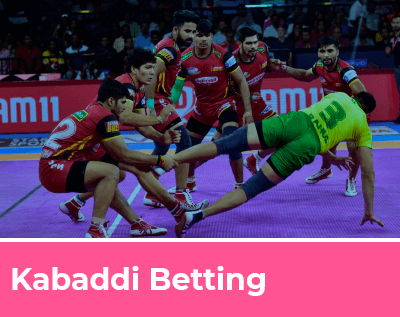Learn the basics of sports betting odds with our comprehensive guide. Understand different types of odds (moneyline, decimal, and fractional), how to read them, and calculate potential winnings. Perfect for beginners, this guide helps you make smarter betting decisions in your favorite sports.
Betting odds are crucial in sports betting, as they determine potential payouts and vary by region and sportsbook in terms of format. Understanding these different types of odds is essential for any bettor aiming to make informed choices and optimize their chances of profit.
The three most common types of odds are American, Decimal, and Fractional. American odds, widely used by U.S. sportsbooks, are displayed as positive or negative numbers. Positive odds show the potential profit on a $100 bet, while negative odds indicate the stake needed to win $100. Decimal odds, popular in Europe and Australia, reflect the total payout, including the initial stake. Lastly, fractional odds, common in the U.K. and Ireland, represent the potential profit relative to the stake.

Whether you’re an experienced bettor or just starting, understanding the basics of betting odds is vital. Knowing how to read and interpret different odds formats enables smarter decisions and improves your chances of success. Below, we’ll explore each of these odds types in detail, offering examples to illustrate how to use them effectively in sports betting.
Understanding Betting Odds
Betting odds help determine potential payouts and express the likelihood of an outcome. They’re presented in various formats, most commonly Decimal, Fractional, and American.
Decimal Odds
Decimal odds are the most common format used by sportsbooks in Europe, Australia, and Canada. They represent the total amount returned to the bettor on a winning wager, including the initial stake. For example, if the decimal odds are 2.50, a £10 bet will return a total of £25 (£10 x 2.50). The implied probability of a winning bet can be calculated by dividing 1 by the decimal odds. For instance, 1/2.50 = 0.40, or 40%.
Fractional Odds
Fractional odds, commonly used in the U.K. and Ireland, represent the potential profit on a winning wager, excluding the stake. For example, if the fractional odds are 5/1, a £10 bet would return £50 in profit (£10 x 5). To find the implied probability, add the two numbers in the fraction, divide by the second number, and then calculate its inverse. For example, (5+1)/1 = 6, so 1/6 = 0.1667, or 16.67%.
American Odds
American odds, also called moneyline odds, are primarily used in the United States. They have two forms: positive (+) and negative (-). Positive odds indicate potential profit on a $100 bet, while negative odds indicate the amount needed to win $100. For example, if the odds are +150, a $100 bet would return $150 in profit. If the odds are -150, $150 must be staked to win $100. Implied probability can be calculated using these formulas: for positive odds, (odds / (odds + 100)) x 100; for negative odds, (100 / (odds + 100)) x 100.
Value and Errors
“Value” refers to bets with a positive expected return, where the odds offered by the sportsbook are higher than the true probability of an outcome. Bettors should seek value bets to increase their potential profit.
Errors may occur when sportsbooks miscalculate their odds. Bettors who identify these discrepancies can exploit them to place wagers with positive expected value.
Underdogs and Bettors
- An “underdog” refers to a team or player expected to lose. If odds favor the underdog, betting on them may be profitable.
- Bettors should always consider the implied probability of the odds. If the implied probability is less than the actual probability, the bet lacks value and should be avoided.
- For bettors seeking wise, profitable wagers, understanding different betting odds formats is essential. Calculating the implied probability of odds and seeking value bets can improve chances of success.
Types of Betting Odds
Betting odds represent both the probability of an event occurring and the potential payout. They are mainly categorized into three types: American, Decimal, and Fractional. Each format is uniquely structured and has regional preferences.
American Odds
- Used primarily in the U.S., American odds are represented by a three-digit number, prefaced by either a plus (+) or minus (-) sign. Positive odds show the potential profit on a $100 bet, while negative odds indicate the amount needed to win $100.
- For instance, if the odds are +150, a $100 bet would return $150 in profit. If the odds are -150, $150 must be wagered to win $100.
Decimal Odds
- Decimal odds are common in Europe, Canada, Australia, and New Zealand. Represented by a number with two decimal points, this figure shows the total return on a winning bet, including the original stake.
- For example, if the odds are 2.50, a bettor would receive $2.50 for every $1 wagered, including their original stake. This means a profit of $1.50 for each dollar wagered.
Fractional Odds
- Popular in the U.K. and Ireland, fractional odds are displayed as two numbers separated by a slash (/). The first number represents the potential profit, and the second number represents the stake.
- For instance, if the odds are 5/1, a bettor would receive $5 in profit for every $1 wagered. Total returns would include this profit and the original stake, resulting in $6.
- Overall, American, Decimal, and Fractional odds are the primary odds formats used in sports betting. Each format has a unique structure and is prevalent in different regions worldwide.
Converting Between Odds Formats
Being able to convert between odds formats is crucial for bettors, as different sportsbooks and betting platforms may use different formats. Fortunately, several online odds converters allow quick and easy conversions between formats.
To convert fractional odds to decimal, divide the numerator by the denominator and add 1. For example, 4/1 would be 5.0 in decimal odds. Conversely, to convert decimal odds to fractional, subtract 1 and express the result as a fraction. For example, decimal odds of 2.5 would convert to 3/2 in fractional format.
American odds are slightly more complex, as they can be positive or negative. Positive odds reflect an underdog, while negative odds indicate a favorite. To convert positive American odds to decimal, divide by 100 and add 1. For example, +200 American odds would be 3.0 in decimal. To convert negative American odds, divide 100 by the odds and add 1. For example, -150 would convert to 1.67 in decimal.
Note that online converters may round odds, which could affect payouts and profit. Checking converted odds carefully or using a conversion chart can be beneficial.
When making a single bet, the stake is the amount wagered. The return is the total payout, including the original stake, if the bet wins. Profit is the difference between the return and the original stake.
In summary, converting between odds formats is a valuable skill for any bettor. Using odds converters or conversion charts allows bettors to quickly, accurately convert odds and make more informed bets.
Betting Odds Around the World
Betting odds vary globally, with preferred formats in different countries and regions. In the U.K. and Ireland, fractional odds are standard, while decimal odds are common in Europe. In Australia, both decimal and fractional odds are used, with decimal being more popular. Canada uses American odds, as does the U.S.
U.K. and Ireland
Fractional odds are the most common format on online betting sites in the U.K. and Ireland. Displayed as fractions, such as 2/1 or 5/2, they represent potential profit from a wager. For example, a £10 bet on a 2/1 odd horse would yield £20 in profit if the horse wins, plus the original £10 stake.
Europe
Decimal odds are widely used across Europe, shown as numbers such as 2.50 or 3.75, representing the total payout on a winning bet, including the initial stake. For instance, a €10 bet at 2.50 odds on a football game would return €25 if successful.
Australia
Both decimal and fractional odds are common in Australia, though decimal odds are more popular. They indicate the total payout on a winning bet, including the original stake. For example, a $10 bet at 2.50 odds on a horse would return $25 if the bet wins.
Canada
Canada uses American odds, displayed as positive or negative values like +150 or -200, showing the potential profit or required stake.
Value Betting
Value betting is a strategy used by many professional bettors to find wagers with a positive expected value. This involves identifying bets where the sportsbook’s odds are higher than the true probability of the outcome. By doing this, bettors can profit in the long run, even with some losses along the way.
FAQ
What are the different types of odds?
Odds are primarily categorized into Fractional, Decimal, and American formats. Fractional odds are used in the U.K. and Ireland, Decimal odds in Europe and Australia, and American odds in the U.S. and Canada.
How can I convert between odds types?
Many online tools and calculators help convert odds between formats. To convert Fractional to Decimal odds, divide the numerator by the denominator and add 1. For instance, 2/1 becomes 3.00 in Decimal odds.















